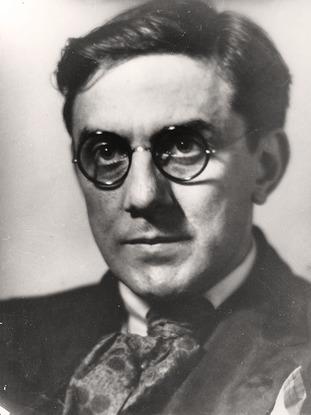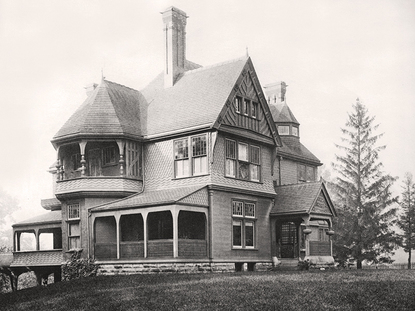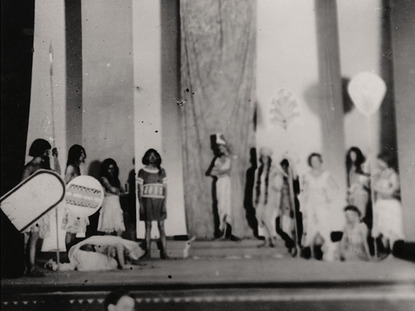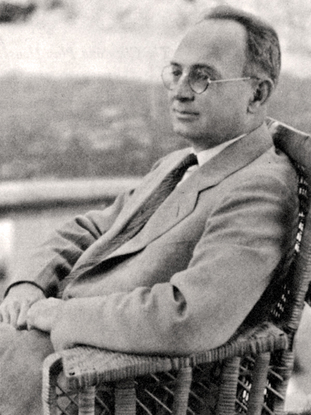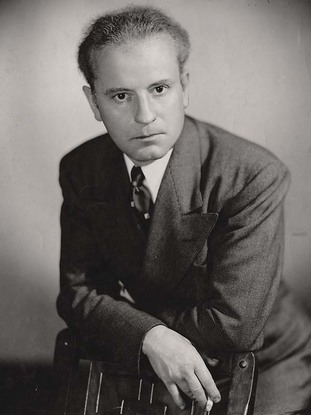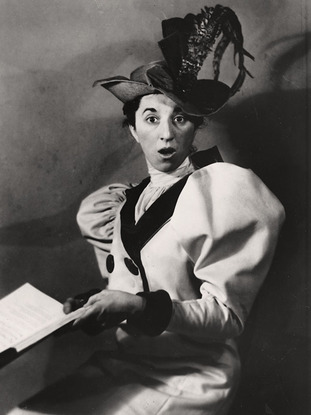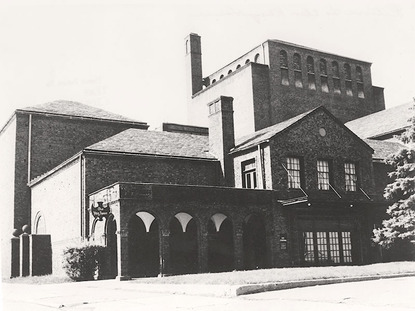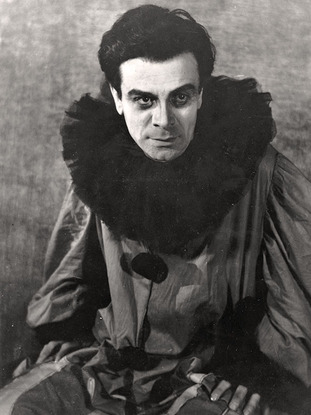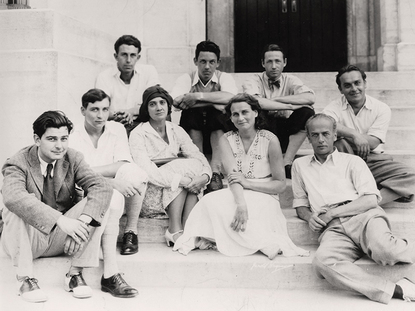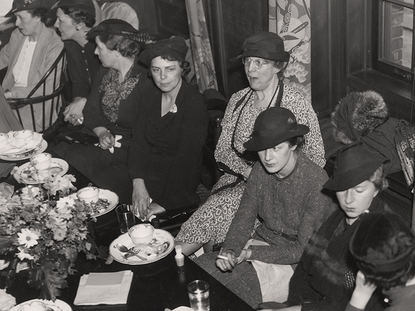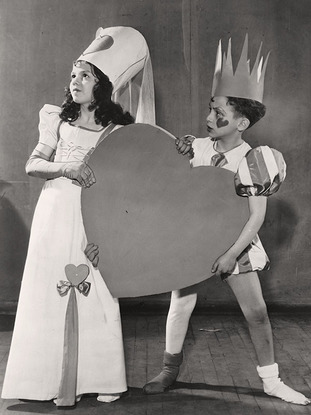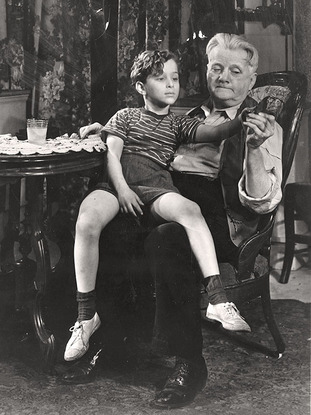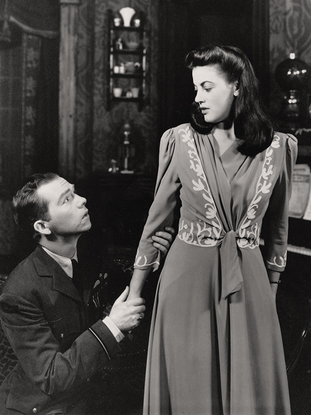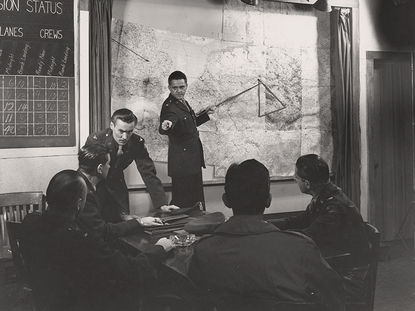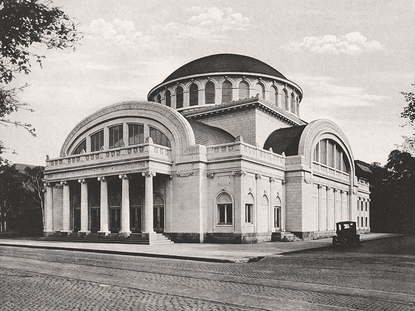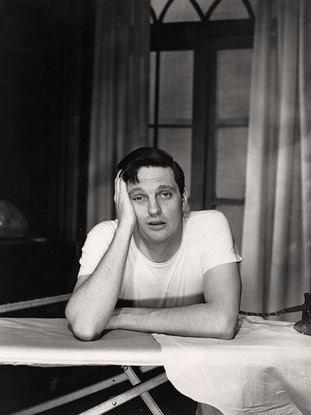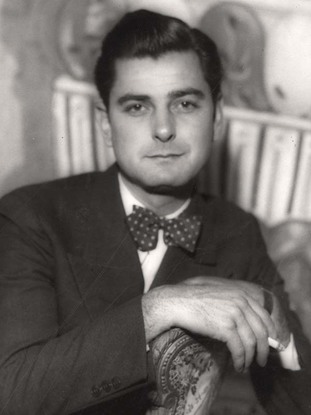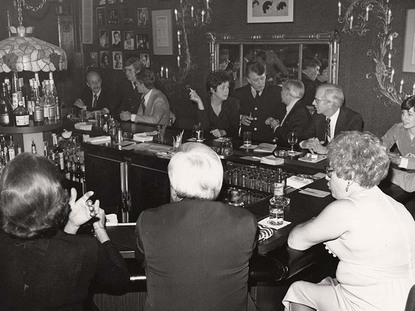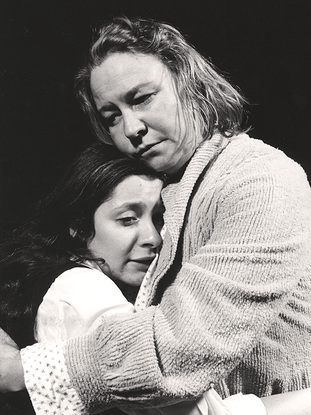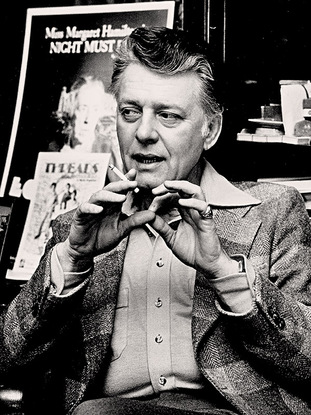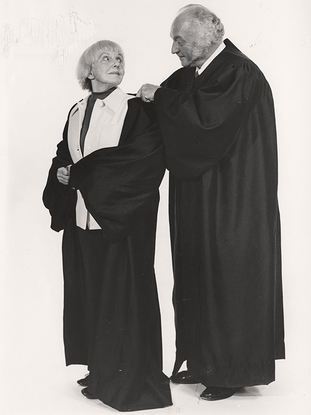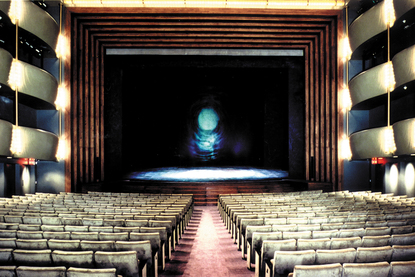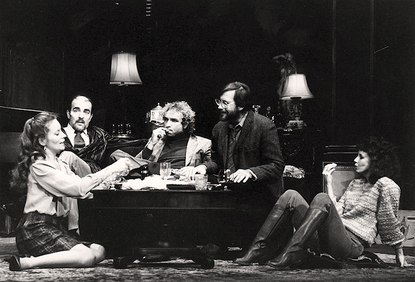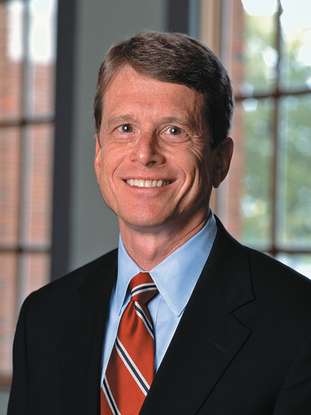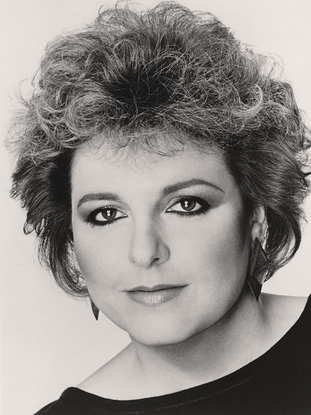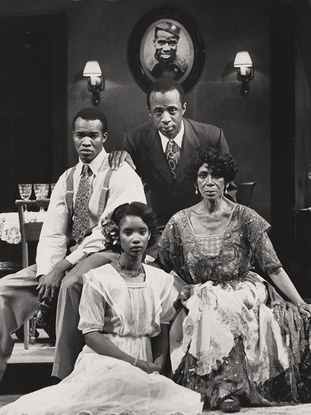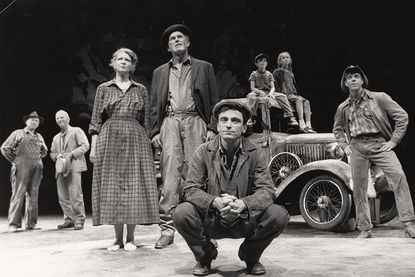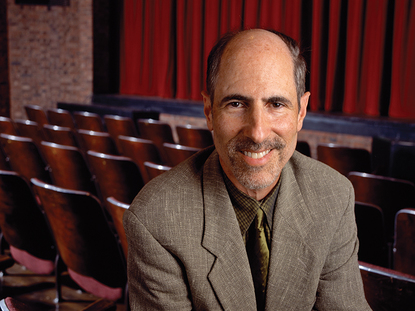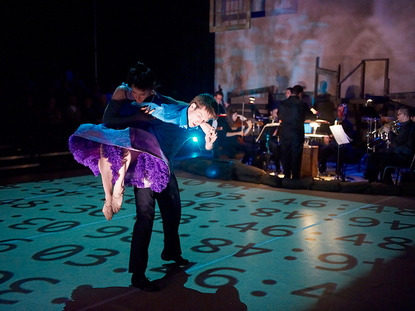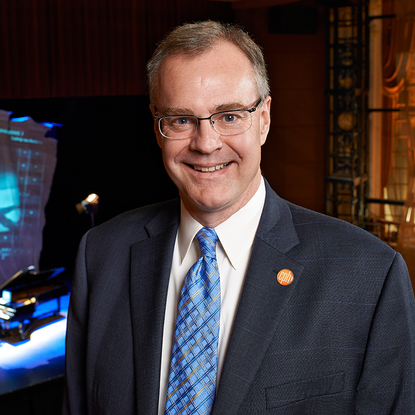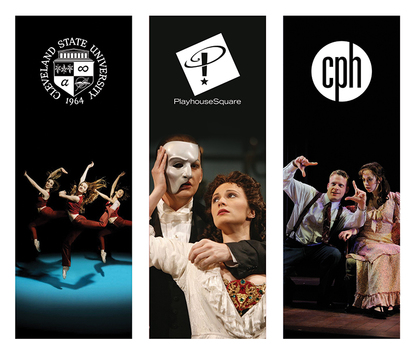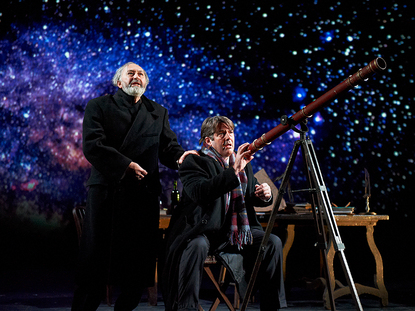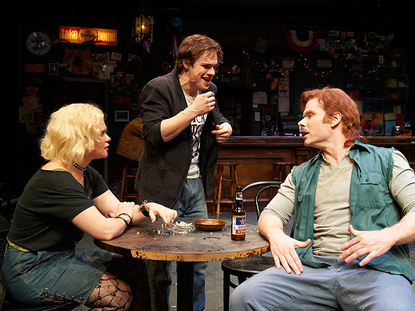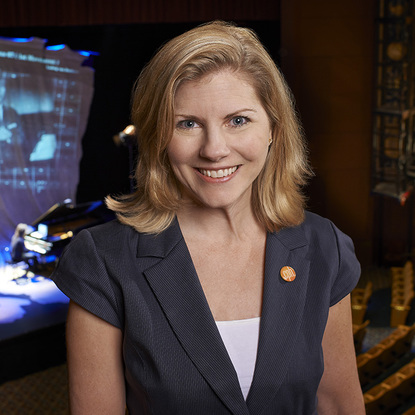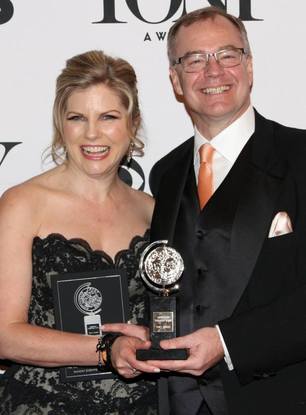1914
Raymond O’Neil (pictured), drama and music critic for the The Cleveland Leader, travels to Europe. He visits Germany where he encounters Max Reinhardt’s theatre and Russia where he is profoundly influenced by the Moscow Art Theatre.
1915
Inspired by Raymond O’Neil, Charles and Minerva Brooks convene a dinner party in early fall to discuss the forming of an Art Theatre with O’Neil as Director. Francis Drury donates the use of the empty Ammon House for the first performances.
1916
The first performances take place in May, among them Strindberg’s Mother Love. It is agreed that the name should be Cleveland Play House and the motto “Art in Democracy.”
1917
Francis Drury donates $6,000 and materials from the now demolished Ammon House to acquire and convert a church at East 73rd Street & Cedar Avenue. In December, the 180-seat Cedar Avenue Theatre opens with a pantomime entitled The Garden of Semiramis.
1919
O’Neil balks at producing the number of plays that CPH leaders promised to its members, creating an institutional crisis for the fledgling group. CPH President Walter Flory (pictured) saves the organization with an impassioned speech to the members, stating: “Let us first recognize that The Play House does not belong to you or me, or even to us as a group. It belongs to the community. It was dedicated at birth to this great, striving, thriving, struggling, multifarious, cosmopolitan city. We are merely its trustees and guardians, not its owners.”
1921
Raymond O’Neil resigns as Artistic Director of CPH. Play House trustees appoint Frederic McConnell (pictured) as the new Director. A graduate of the School of Theatre at Carnegie Institute of Technology, McConnell brings K. Elmo Lowe and Max Eisenstat to assist him. Known as “The Triumvirate,” their arrival marks the beginning of the professionalization of CPH, including the first steps toward forming an acting company.
1923
Margaret Hamilton makes her stage debut at CPH, going on to appear in several plays throughout the 1920s. Hamilton would later become famous for her performance as the Wicked Witch of the West in the MGM film The Wizard of Oz.
1927
Having outgrown the Cedar Avenue Theatre, CPH builds a new theatre plant on land donated by Francis Drury near the site of the old Ammon House. The 86th Street Theatre (pictured) includes the 500-seat Francis E. Drury Theatre and the 160-seat Charles S. Brooks Theatre.
1929
Jacob Ben-Ami, a star of the Yiddish stage, is the first Equity actor to be hired by CPH, appearing in Leonard Andreyev’s He Who Gets Slapped.
1930
CPH performs five shows at the Chautauqua Institute in Chautauqua, New York, launching a summer tradition that would last for more than fifty years.
1931
CPH and the School of the Theatre at Western Reserve University collaborate on a six-week theatre course. The joint venture is the first time that an institution of higher learning collaborates with a professional theatre to offer a course for college credit.
1932
The Women’s Committee forms to provide volunteer support for CPH, including subscription sales, fundraising events and strike night dinners for the crew. The group continues to serve CPH for 79 years.
1933
The Play House Children’s Theatre, later to be known as Curtain Pullers, is founded under the direction of Esther Mullin. Believed to be the first of its kind in America, the program provides free theatre education to Cleveland youngsters.
1941
Nine-year-old Joel David Katz appears in Paul Osborn’s On Borrowed Time. A member of the Curtain Pullers, Katz goes on to an award-winning stage and film career under the name Joel Grey.
1943
CPH produces the world premiere of You Touched Me by Tennessee Williams. Margo Jones is the first woman hired to direct at CPH, though McConnell removes her during rehearsals due to artistic differences.
1946
CPH produces the world premiere of Command by William Wister Haines. The play has a successful run on Broadway and becomes an MGM film entitled Command Decision.
1949
CPH opens a third theatre in a church at 77th & Euclid. Known as the 77th Street Theatre, the new venue uses an open, modified thrust configuration to accentuate the actor-audience relationship with minimal use of scenery.
1957
In one of its first major grants to a regional theatre, The Ford Foundation awards CPH $130,000 to form and tour with an apprentice resident company. Continuing to 1960, the Ford Foundation Ensemble includes Alan Alda (pictured) at the beginning of his long and successful career, and Jon Jory, who became Artistic Director at Actors Theatre of Louisville where he founded the Humana Festival of New American Plays.
1958
Frederic McConnell announces his retirement as Artistic Director of CPH after 36 years. Long-time associate K. Elmo Lowe (pictured) succeeds him. CPH enters its first formal agreement with Actors Equity Association.
1960
The Play House Club, a nonprofit theatre dining club, is founded by the Men’s Committee in the 77th Street Theatre, continuing to operate through 2007.
1961
CPH becomes a founding member of Theatre Communications Group (TCG), the national trade association for the nonprofit professional theatre industry.
1966
CPH becomes a founding member of the League of Resident Theatres (LORT), a management collective for the purpose of collective bargaining with Actors Equity Association and other artist unions.
1969
K. Elmo Lowe retires after 48 years at CPH, the last eleven as Artistic Director. William Greene succeeds him. Paul Zindel’s The Effect of Gamma Rays on Man-in-the-Moon Marigolds opens in the Brooks Theatre, later to be produced in New York and win a Pulitzer Prize.
1970
William Greene passes away unexpectedly, and is succeeded by Rex Partington. An ill-fated production of Lysistrata leads to Partington’s departure within a year.
1971
Richard Oberlin, a member of the Play House Acting Company since 1955, is appointed Artistic Director of CPH.
1975
CPH produces the world premiere of First Monday in October by Northeast Ohio natives Jerome Lawrence and Robert E. Lee. The play is subsequently produced at the Kennedy Center and on Broadway and is made into a feature film.
1983
CPH expands the 86th Street Theatre by adding the newly constructed Kenyon Bolton Theatre, a 650-seat proscenium venue, and a 100-seat black box. The expansion includes the addition of an adjacent Sears building to be used as a production and rehearsal center. The 77th Street Theatre is decommissioned as CPH is now fully contained in one facility.
1984
CPH produces the world premiere of Arthur Miller’s The Archbishop’s Ceiling, directed by Jonathan Bolt. CPH trustees adopt a co-executive management structure with Al Milano as Managing Director and Richard Oberlin continuing as Artistic Director.
1985
Richard Oberlin retires after 14 years as Artistic Director. Company member William Rhys is appointed acting Artistic Director while the Board of Directors launches a national search for a successor.
1986
Dean Gladden succeeds Al Milano as Managing Director.
1988
Josephine R. Abady (pictured) launches her first season as Artistic Director by directing a revival of Born Yesterday starring Ed Asner and Madeline Kahn. The production moves to Broadway, earning a Tony Award nomination for Ms. Kahn. After 67 years, the Acting Company is disbanded in favor of a show-by-show casting policy.
1989
CPH is the first to produce The Glass Menagerie with an African-American cast, under the direction of Tazewell Thompson.
1994
Josephine Abady departs her position as Artistic Director of CPH, succeeded on an interim basis by Roger Danforth.
1995
Peter Hackett is appointed Artistic Director, launching his tenure by directing The Grapes of Wrath.
1996
Case Western Reserve University and Cleveland Play House build on 65 years of collaboration by launching a jointly administered Master of Fine Arts in Acting Program.
2004
Peter Hackett steps down as Artistic Director. Michael Bloom (pictured) succeeds him
2006
FusionFest, an annual multi-disciplinary arts festival, is launched. Dean Gladden departs after 20 years as Managing Director for a similar position with the Alley Theatre in Houston.
2007
Kevin Moore is named Managing Director.
2009
CPH announces that it is joining with Playhouse Square Foundation and Cleveland State University to create three new theatres for shared use by the partners, including a reconfigured 1920s movie palace and two newly constructed theatres.
2011
CPH ends its 84-year run in the Drury Theatre in May with Legacy of Light by Karen Zacarias. The newly configured, 500-seat Allen Theatre at Playhouse Square opens in September with Brecht’s The Life of Galileo (pictured).
2012
The Second Stage (later renamed the Outcalt Theatre), a fully flexible venue seating up to 350, opens with Ten Chimneys by Jeffrey Hatcher. CPH completes its relocation to Playhouse Square when the Helen Rosenfeld Lewis Bialosky Lab Theatre opens with the CWRU/CPH MFA Acting Program production of In Arabia We'd All Be Kings (pictured) by Stephen Adly Guirgus. New Ground Theatre Festival debuts, replacing the former FusionFest. The Roe Green Award for Playwriting is established, with the inaugural prize going to Quiara Alegria Hudes.
2013
Michael Bloom steps down as Artistic Director. In September, Laura Kepley is introduced to the community as CPH’s ninth Artistic Director, stating:
“I am excited to continue to work together to lead CPH into our centennial season and launch the next hundred years of serving our community by telling provocative, smart, relevant and entertaining stories and through meaningful, innovative, and fun education programs.”
2015
As it approaches its 100th season, Cleveland Play House receives the 2015 Regional Theatre Tony Award, one of the most prestigious and coveted honors in the entertainment industry.




